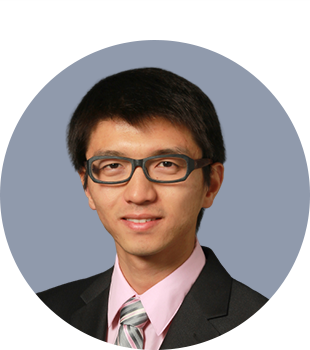In the past ten years, Cheng established and contributed to structural design strategies for wearable and stretchable electronics. One of the most significant challenges in the field of stretchable electronics is to overcome the mismatch between stiff, planar rigid electronics and soft, curved biology. Cheng has introduced and contributed to the development of strain isolation strategies, mechanically skin-like device properties, various stretchable structures, and advanced transfer printing techniques. With these design and fabrication approaches, Cheng has demonstrated various stretchable electronic devices for the continuous monitoring of biomarkers in healthcare. This new class of stretchable devices provides an alternative approach for integrating electronics on a soft, stretchable substrate designed to match the physical property of soft tissues. The demonstrated sensors can monitor a variety of biophysical and biochemical signals. This publication has been selected to be part of the National Nanotechnology Initiative (NNI) Supplement to the USA President’s 2021 Budget. Capable of intimate contact with the soft tissue, such a system can continuously capture clinically relevant signals from freely moving individuals for preventative monitoring and early diagnostic confirmation.
More recently, Cheng's group has developed a simple yet universal manufacturing approach to fabricate both the on-skin sensors and flexible printed circuit boards (FPCBs) for the soft body area sensor network, which has been reported by more than 100 news outlets. The electronic system consists of skin-printed sensors for measurements of physiological signals, commercial off-the-shelf chips for extended data processing, wireless data/power transmission modules, and paper-/textile-based FPCBs for system integration. These biophysical and biochemical sensors can also be integrated with their recently developed soft, skin-interfaced microfluidic devices for sweat collection and analysis at significantly improved accuracy. This class of skin-interfaced microfluidic platforms is also capable of capturing, storing, and assessing the other biofluids (e.g., tears, saliva, interstitial fluids) in order to provide essential insight into human physiological health.
Building on their existing efforts, his group is developing smart face masks with integrated, flexible nanomaterial virus sensors to conveniently and effectively detect SARS-CoV-2 viruses spread from respiratory activities. The resulting smart face masks will allow for continuous monitoring and tracking of the virus with easy access for COVID detection. In addition to direct virus detection, a paradigm-shifting wearable sweat patch for the real-time measurement of infection and inflammatory markers, which will provide breakthrough solutions to understand and manage immunological responses to infection, is also being developed and validated. The early identification of inflammatory markers will lead to further diagnostic tests that can lead to the specific diagnosis of an infectious condition. To fully unlock the potential of photoacoustic tomography (PAT), his group has recently started to develop an innovative toolset that enables 3D functional photoacoustic imaging of the human cortex from freely moving individuals. The proposed toolset encompasses a novel stretchable and wearable ultrasound matrix array that can seamlessly conform to the skull’s shape, an advanced photoacoustic imaging system with contact light delivery, as well as a novel ultrasound-enhanced transcranial PA image reconstruction method. Additionally, Cheng's group has extensive experience in developing stretchable wireless modules based on high-performance stretchable metal antennas. Taken together with high-performance supercapacitors and energy harvesting modules (e.g., triboelectric or piezoelectric nanogenerators), his group works to create a self-powered, wireless stretchable system for long-term and accurate monitoring of health-related signals. The study can also provide artifact-free biophysical sensors, highly sensitive/selective biochemical sensors, and sustained energy modules with applications in disease diagnostic confirmation, healthy aging, biomedical research, and clean energy.




